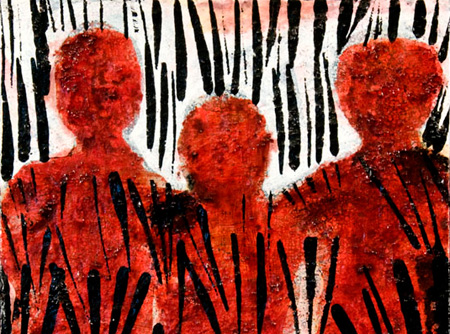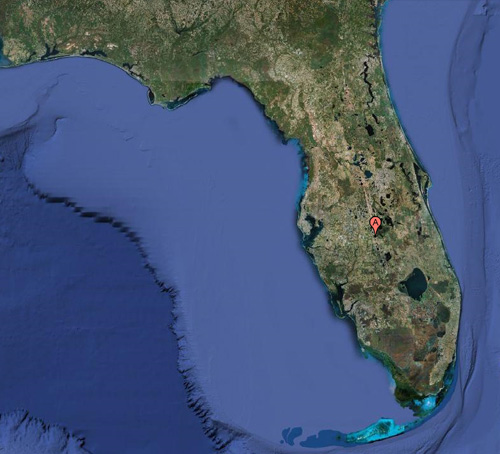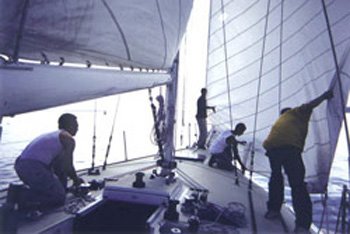
This blog entry was precipitated by a visit that my wife Amy and I made to our mutual alma mater a few weeks ago.
I had only been back to RISD four times since graduating in 1972. After art school, I traversed the country as a freelance graphic designer and illustrator for about 11 years.
My creative sojourns included Portland (Oregon); Palo Alto/Stanford; Berkeley; New York City; and finally, meeting Amy in Manhattan when she was interviewing me for a job. We then moved to Philadelphia. Our time currently unfolds in Portland (Maine), Philly, and St. Pete.
My wife and I ran a successful design studio together while our daughter was growing up. In early 1991, I was in a serious accident in the high mountain country of Telluride. Personal health stories are usually distressing bores, but suffice it to say that it changed everything for me.
The upshot of the experience brought me to the new digital video production and giclée printmaking. As far as I know, Blake+Barancik was among the first design studios to embrace both the Apple computer and the web in the Philadelphia metro area.
The creative flexibility of my undergrad years at RISD and graduate education at Stanford made this leap possible. It instilled an appetite for both cultural and technological innovation, plus a confidence that one could always learn what was needed.
Unfortunately, the late 1960s and early ’70s also came with a super-sized portion of wrong-headedness that has become institutionalized in most of our academic diploma mills.
The following musing on the absurdity and harmfulness of the status quo is my desire to save creative young people a lot of unnecessary grief and failure.
Hopefully, the following ideas will provoke some decisions in the present that might pay real dividends in your future.
As I see it, these are the three key facets to successfully adapting to the emerging Creative Economy:
- Individuals must continually learn new skills and mindsets to prosper in an advanced global economy.
- That which cannot be economically sustained, will not be sustained.
- Any technology that can greatly optimize a given task will be applied, regardless of prevailing standards, protocols, and sentiments.
1. Individuals must continually learn new skills and mindsets to prosper in changing times.
It is ludicrous to imagine that the exact skills acquired as a teenager or young adult will be the same ones that will allow a person to be successful twenty years later.
A skeptic might say that this is true for industrial designers, digital animators, urban planners, and other techie types; but potters, furniture makers, ballet dancers, musicians, singers, novelists, landscape architects, actors, and other creatives will just keep on doing what they have always done…dream on.
I suspect that the more traditional art forms will continue to evolve technically and will seek new markets and venues. For instance, potters who successfully combine their knowledge of ceramics with other materials will no doubt garner new customers and increased income — or they might combine their skills with art therapy and service the psychological needs of a gargantuan aging population.
Conversely, young computer wiz-kids will eventually be middle-aged. It would be nuts to imagine that key software of the future will look or function anything like today’s Final Cut Pro, After Effects, and CreativeSuite. And remember, there will be another generation of ambitious young geeks just out of school who will be ready, willing, and able to leapfrog to the next new app.
In many ways the ballet dancer has it easier. She or he knows that it is over by 35 and one must move into choreography, open a ballet studio, or change careers altogether.
In any event, an individual in every creative profession will have to reinvent both oneself and one’s career. It all comes down to lifelong learning that will stretch easily into one’s mid to late seventies.
2. That which cannot be economically sustained, will not be sustained.
This point takes aim at the unsustainable escalation of tuitions at art schools, music conservatories, state colleges and universities. To my eye, these institutions are exactly where Detroit automakers were ten years ago; largely asleep at the wheel. Their insular execs and boards, bloated benefits packages, and inflexible tenured senior labor force are not competitive. And this whole wasteful process sustains a product of increasingly dubious social utility.
Just as the government has continued to bail out American carmakers, the feds continue to bail out the consumers of greatly inflated higher education.
Through readily available government-financed loan schemes, virtually anyone with the good fortune to be born into the middle or professional classes can come up with the cash for four years of art and design training. Even for young people of modest and disadvantaged financial backgrounds, money can be found. Massive personal debt has truly been democratized.
That translates into about $120K to $170K for room, board, and tuition for private education; and about $40K to $70K for state schools.
If parents were asked to pay these bills directly out of pocket, most of them couldn’t and wouldn’t invest in their children’s creative careers.
This reduction in the number of people entering the creative fields from college would both shrink programs to more sustainable sizes and improve standards. And it would raise both the entry salaries of graduates and their career prospects.
It is hardly a deep dark secret that most of the creative economy is a “winner take all” game — with a relatively few stars garnering the bulk of money and attention. With fewer young adults entering the field, more people would get a bigger slice of the pie.
Things were different for creative college students 35 years ago. In 1971, Amy had a whopper of an argument with her father about going to art school. It resulted in her paying her own RISD tuition, room, and board for the next three years.
She did this by using her training as an illustrator and graphic designer. She worked at multiple jobs while taking a demanding class load. This was possible not just because she is very talented, smart, and incredibly hard working — but also because the total cost for tuition, room, board, and art supplies was well under $4K a year.
Incidentally, Amy left RISD with $1,300 in the bank, which is the equivalent to at least $7,000 in today’s inflated greenbacks. Contrast this with the current legions of debt-burdened creative college kids with no savings — only onerous unpaid loans.
3. Any technology that can greatly optimize a given task will be applied, regardless of prevailing standards, protocols, and sentiments.
The third point concerns the necessary embrace of online learning. Even my most opened-minded, middle-aged academic friends go berserk when I bring up this subject.
But the only way to drop the cost of professional art and design training is through technology. Everything that the digital domain touches, it makes more cost-effective and democratic. It crushes old elites and hierarchies. That is why traditional academics are justifiably terrified of electronic learning.
What jobs in the global economy offer guaranteed lifetime employment, increasing salary as you age on the job, and 70% of your working salary in retirement with generous medical benefits for both you and your spouse?
Of course, this is a rhetorical question — tenured academia.
The reality is that four-year degree-granting programs in the creative/expressive domains are vocational. Students go there to get their tickets punched for jobs. The pretense that higher education is producing more “well-rounded” and literate creative professionals is, well…just pretence.
A great many liberal arts programs at mid-level colleges and universities can’t produce graduates who can actually write coherent (and non-plagiarized) essays, much less grasp the dynamics of history, math, science, and the canons of Western civilization. Many of my college professor friends admit (in private) that today’s college students are in general academically inferior to the middle-class high school grads of thirty, forty, or fifty years ago. That goes a long way in explaining the necessity of a MA or MS degree for many entry-level jobs.
On a practical level, here are three “Rules of Thumb” that might provide some useful guidance or at least conversation points between tuition-paying parents and their children:
Big name schools are worth it if you can get the bulk of the expenses paid by the school. If the institution wants you that much, they intend to groom you for the big time.
Don’t underestimate the hometown advantage. If you are a “homie” who wants to stay put, just do it. Your uninterrupted network of human connections will be valuable as your career develops over the decades. Longtime flesh-and-blood friends are far more valuable to our sustained well being than the engaging ersatz digital buddies found on Facebook and Linkedin.
I don’t regret my life as a peripatetic cosmopolitan, but in terms of career, things would probably have been much more lucrative if I just stayed in Chicago — a city that has been the home of both sides of my family since the early 1900s.
I know that this flies in the face of prevailing wisdom of such creative economy gurus like Richard Florida. Their point is that the fleet of foot and exceptionally nimble of mind must run to the next creative hot spot.
Ironically, some of the most successful and sophisticated creative professionals that I have known either stayed in state or came back home in their 30s and 40s. In my opinion, the ever-expanding digital revolution will make any metropolitan area with a major university and international airport a potential creative hot spot.
Stay out of debt if you can. If you cannot avoid college loans, try to keep it to what you think you can reasonably repay in 10 years.
Below are links to three provocative articles from The Atlantic, Wall Street Journal, and New York Times for your consideration:
Tell the Truth About Colleges
What’s Wrong With Vocational School?
In a Digital Future, Textbooks Are History
























